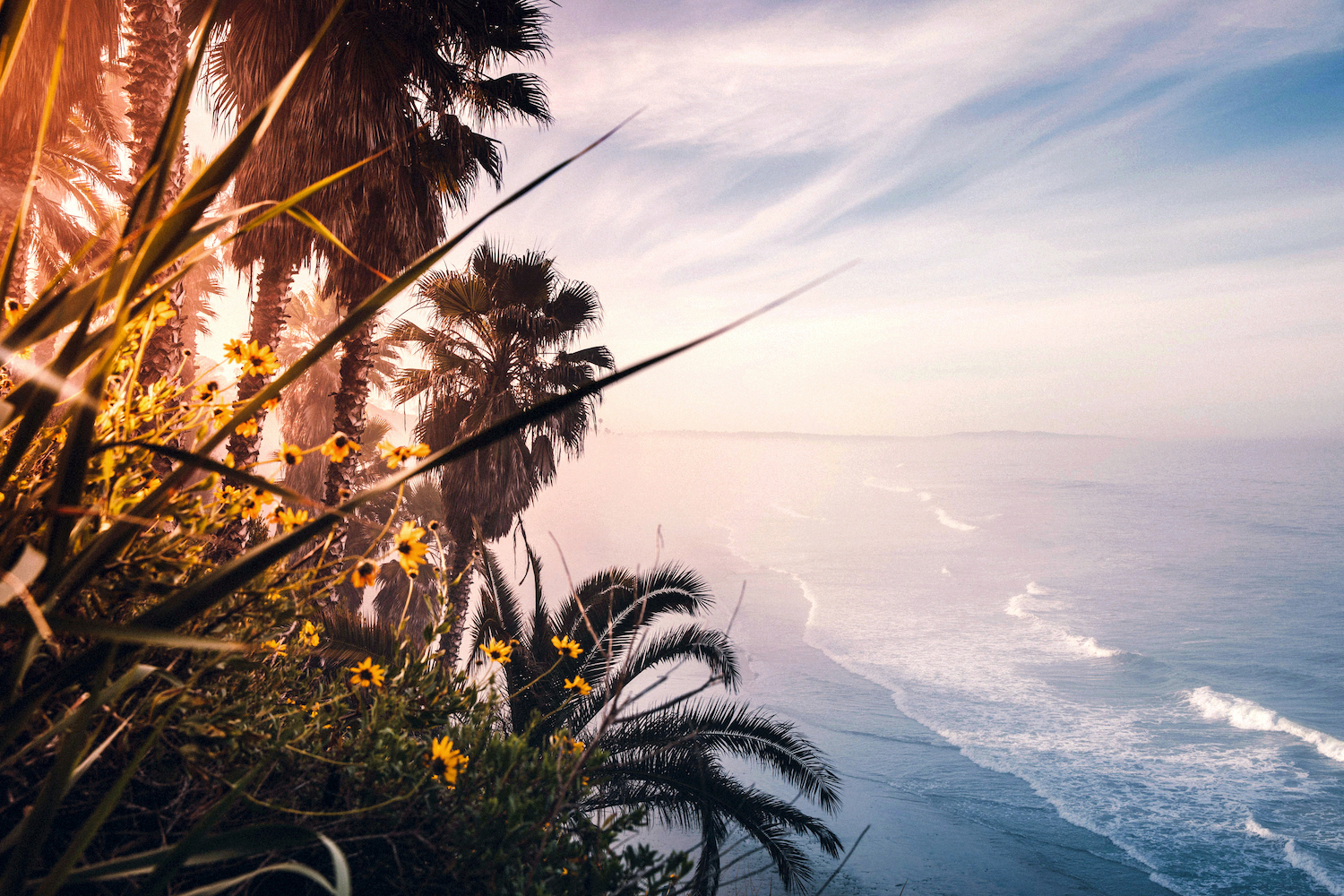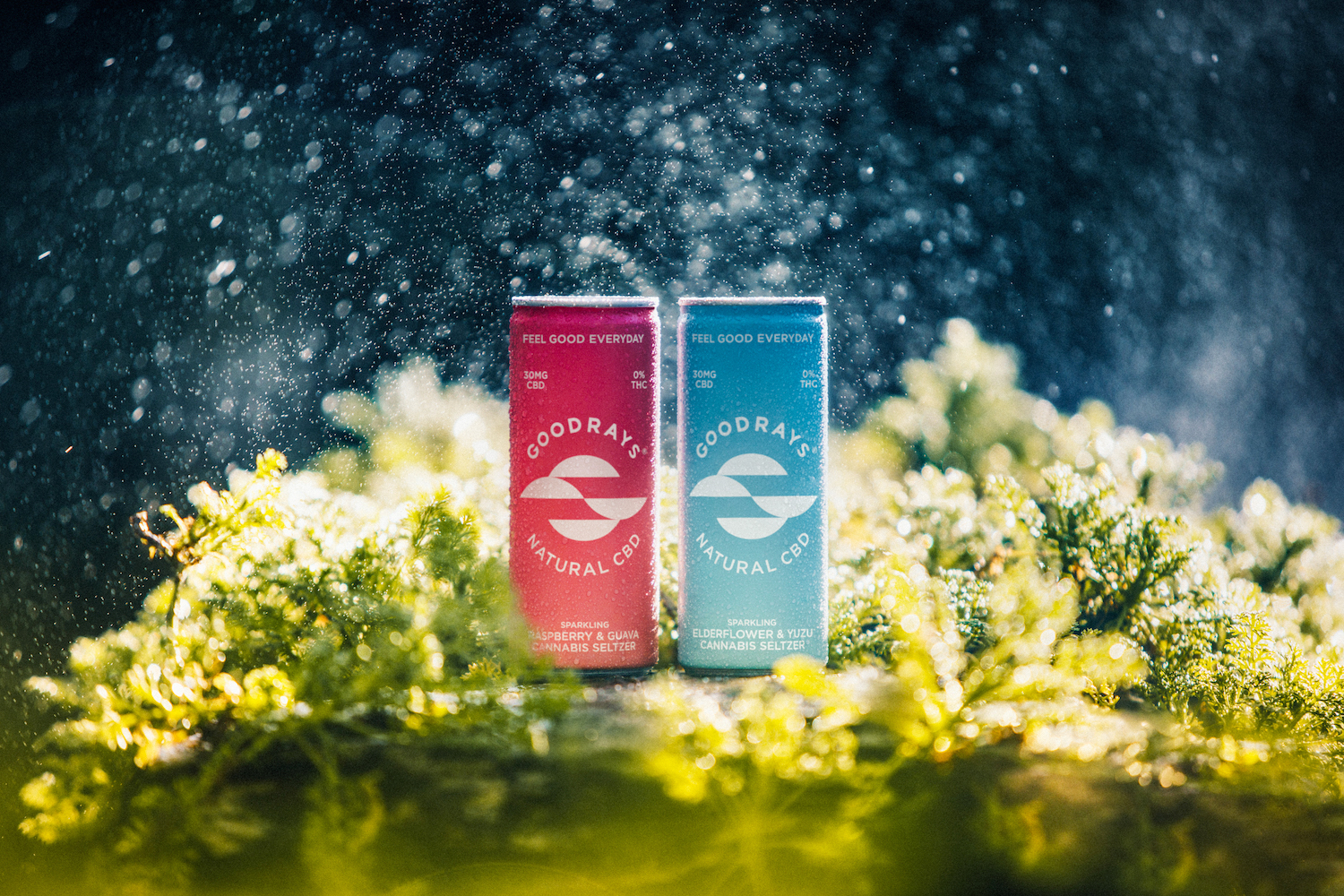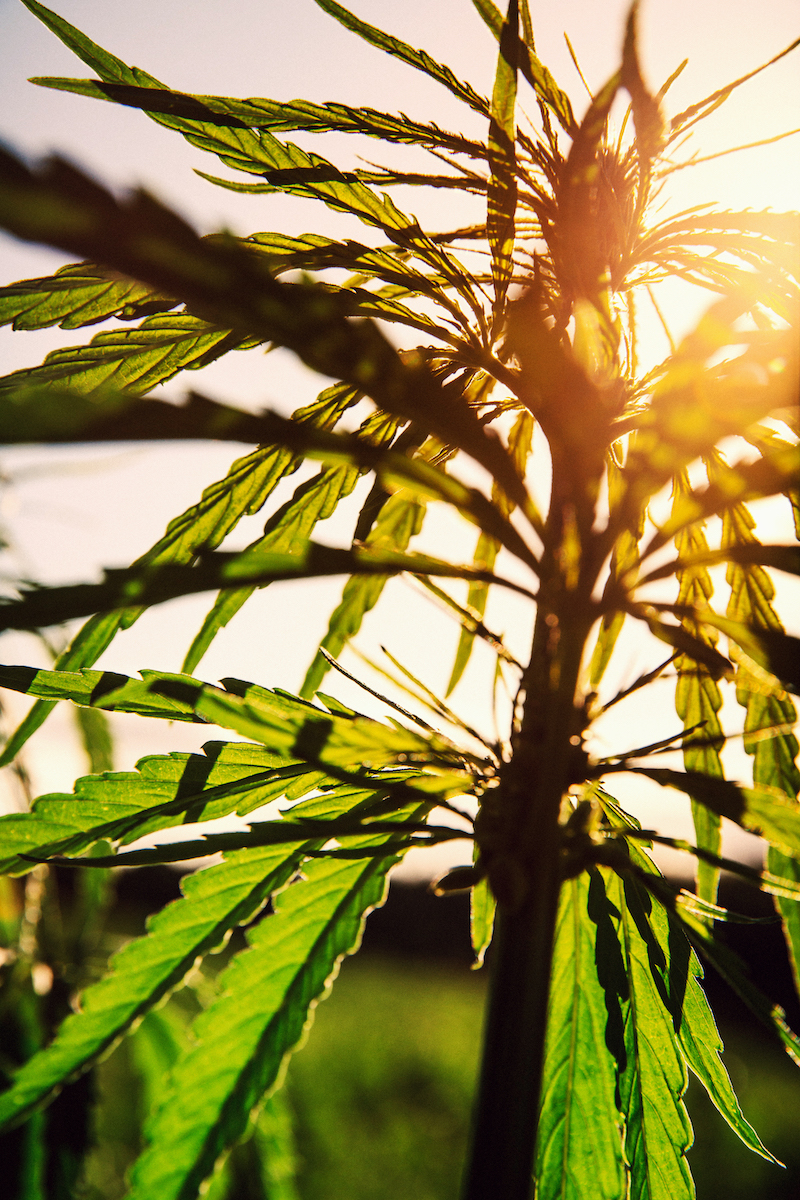Powered by Goodrays
Virginal, unridden surf romped across our planet’s fresh-cut shorelines way back in deep time immemorial. Long before plants, or indeed life itself, were there to witness the violence, oceans first swirled and surged into being under a moody, toxic sky some 4000 million years ago.
Not one to rush things, Jah then took his sweet time before putting flowering plants on the scene to freshen things up, the angiosperms not appearing on earth until around 200 million years ago, long after the conifers had had their fun.
Then, that magical meeting place of a human being partaking in the effects of one of those plants, cannabis, and then riding ocean waves (perhaps bodysurfing rather than atop a bespoke craft) under its influence came a couple of billion years later, some time in the last 40 millennia.
All good things, etc.
As to who and where that very first homosapien to imbibe the herb then slide the glide, senses heightened, gates of perception breached, that seminal foray into the realms of botanically heightened stoke, we’ll never know for sure.
But somewhere warm and sultry, no doubt. Reef and sands glistening, turquoise sea shimmering. Perhaps it was around 10am, tropic light still golden, in a sea of glass before the trades kicked up. Evidence for cannabis’ origins indicates its probable emergence in South Asia, or perhaps in the Orient. But what with yoga, and the origins of both the words ‘surf’ and ‘ganja’ (Sanskrit for hemp), for that very first collab, the Subcontinent feels like the place.
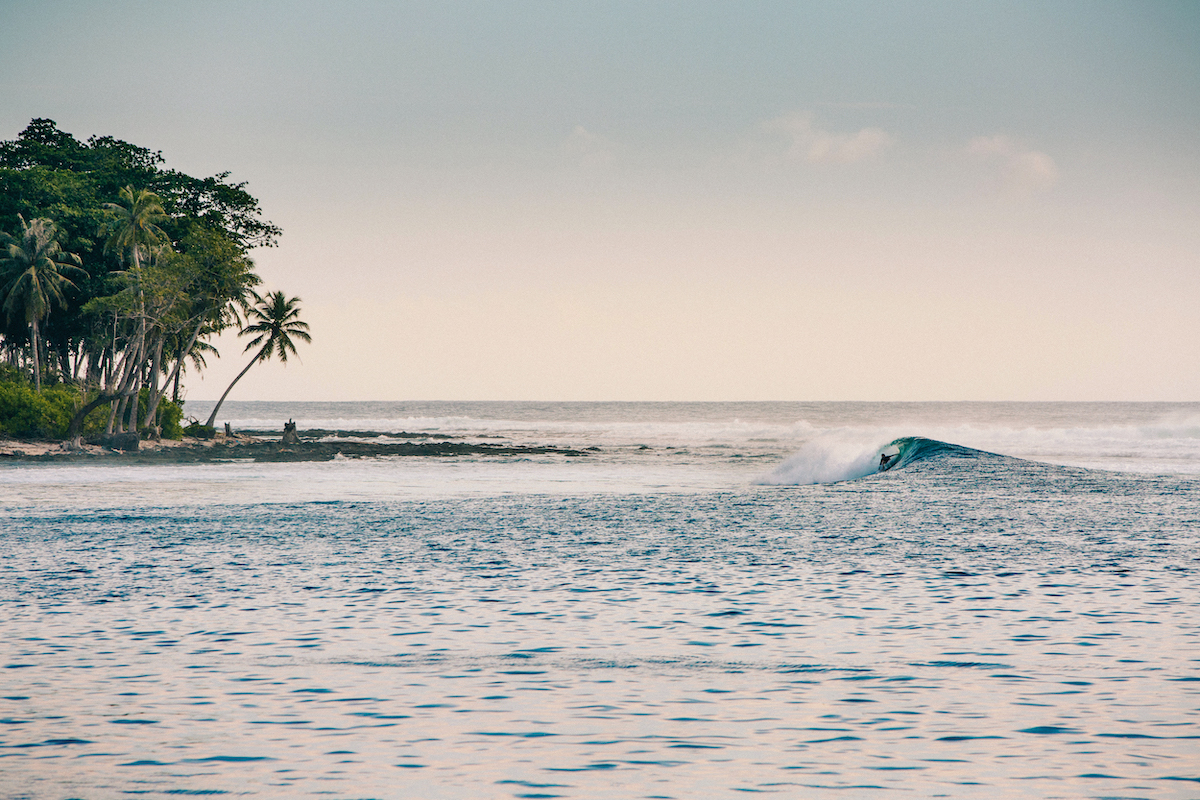
During the maximum ice extent of earth’s periods of glaciation, much of the planet’s flora and fauna remained only in SE Asia, from where it recolonised once the ice retreated. As Tom Curren said of the Indonesian archipelago in a 1994 Surfer article “This is the spore of the world.”
As a whole, sport and plant don’t tend to overlap. Perhaps cricket and willow, maybe U12 football and Citrus sinensis, cut into half-time quarters. At a stretch, darts and hops, and tobacco, if you will. But overall, the venn diagram of sporting/flora overlap is Rizla paper thin.
Somehow though, surfing and Cannabis sativa do seem like a match, to many. “Marijuana was the surfer’s drug of choice, and it fit easily within established surfer culture,” writes Matt Warshaw of the EoS. “Surfers prided themselves on being rebellious—not quite criminal, but not rule-abiding either—and pot was the perfect misdemeanor-level drug. Easy to grow, easy to buy, easy to transport, pot appealed to the surfer’s DIY home-based enterprising spirit.”
The ever excellent Warshaw is but one of many scribes of note to have a thing to say on weed. Time magazine’s first article on the topic in 1943, the herb making its way up from Mexico via the jazz scene, around about the same time first fibreglass and foam boards were being made in California. “Some of the finest products of the symbolist poets owe much of their expressiveness to the use of a drug. But the nature and effects of marijuana, specifically, are a good deal more of a secret than they need be.”
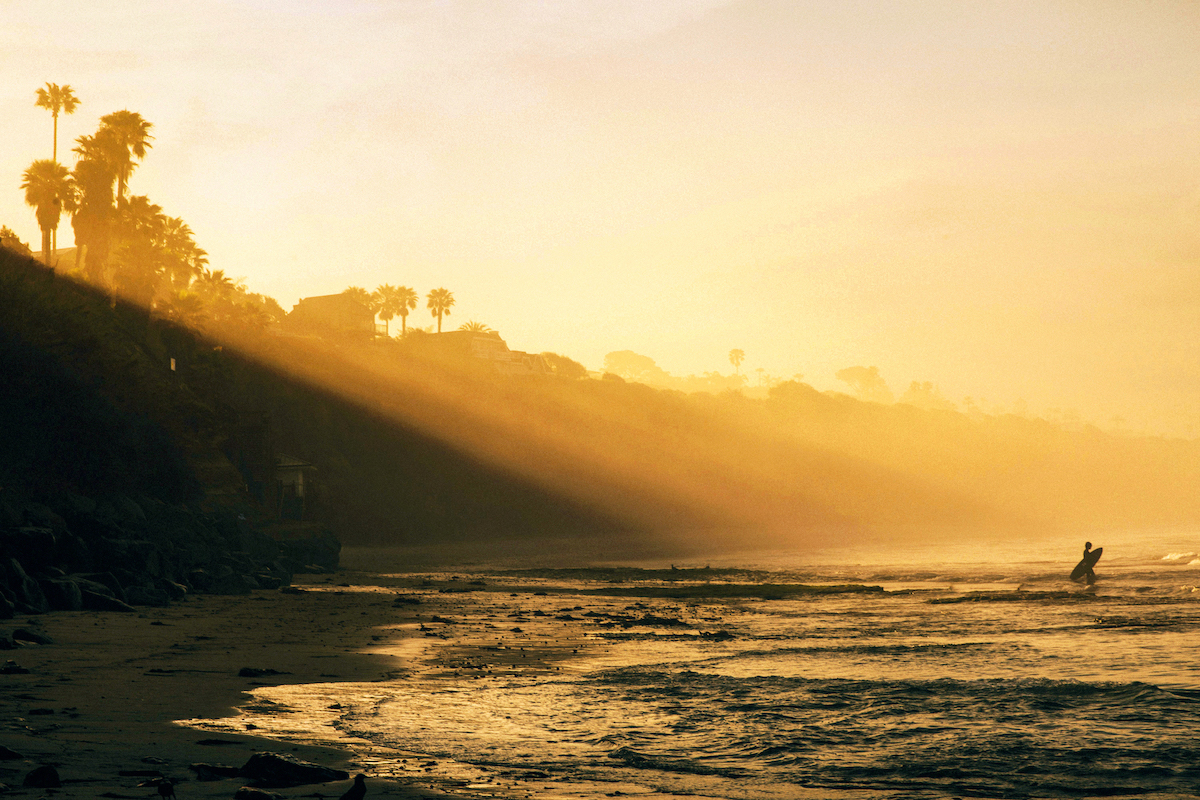
California, traditionally a weed and surfing heartland, legalised recreational marijuana use for adults in 2016.
These days of course, the world of weed is considerably less secretive, but still not as understood as it might be. Luckily, WL and Goodrays are here to shed a little historical light with a handy timeline of surfing and cannabis.
* * *
8000 BC: Archeological dig in the Oki Islands near Japan finds cannabis seeds, dating its earliest known use. The Okis east coasts receive swells from the North and South Pacific, as well as typhoons. Just sayin’.
3000 BC: In Peru, the earliest known bespoke surfcraft, totora reed canoes are used by fishermen to ride waves back to shore.
2800 BC: Medicinal cannabis first recorded use in Central Asia, in Emperor Shen Nung’s apothecary, where it was used to treat arthritis, depression, amenorrhoea, inflammation, pain, lack of appetite and asthma.
300 AD: Polynesians migrate east across the Pacific, settle in the Hawaiian Islands, bringing surfing with them.
10th Century AD: The first known use of cannabis in the UK, found in a Viking settlement. Those warmongering Norsemen used it for rope and fibre, rather than medicinal/ritual chill. D’oh!
1778: Capt Cook becomes the first westerner to witness the sport of surfing when arriving in the Hawaiian Islands, which he dubbed the Sandwich Isles after his Kent-based sponsor the Earl of Sandwich, to whom the bread and meat layered snack of the same name is attributed. Sandwiches, as well as pizza, cereal, crisps and toast would later become highly popular with those under the heightened appetite effects of cannabis’ infamous ‘munchies.’
1840: Queen Victoria uses cannabis to treat menstrual pain, with the royal physician Dr Reynolds very much ahead of his time in noting that the royal uterus, much like every other, is full of cannabinoid receptors.
1890: Hawaiian Princes Jonah Kuhio Kalanianaole and David Kahalepouli Kawananakoa Piikoi surf in Bridlington, becoming Europe’s first ever surfers, in the icy North Sea brine.
1900: USA annexes the Hawaiian Islands as a state. After centuries of repression ever since Christian missionaries first banned surfing, the sport undergoes a resurgence in popularity in the early 20th century.
1903: First legal cannabis dispensary opens in the UK.
1910: Duke Kahanamoku customises his version of the plank surfboard, a 10ft x 23” x 3” redwood board weighing 80lbs.
1943: Time Magazine’s ‘Music: The Weed’ article is published. “The association of marijuana with hot jazz is no accident. The drug’s power to slow the sense of time gives an improviser the illusion that he has all the time in the world in which to conceive his next phrases. And the drug also seems to heighten the hearing—so that, for instance, strange chord formations seem easier to analyze under marijuana.” High brow surf scribes later note that weed’s association with syncopation in music – highlighting the offbeat – might also appeal to some surfers, their manoeuvring representing the counter melody to the wave and swell’s intrinsic rhythm. Either that, or surfing high is just a bit of a giggle.
1957: Jack Kerouac’s On The Road is published, helping usher in the dawning era of youth culture. In it, he refers to weed as “tea” which he toots poetically with Mexican fruit pickers and jazz musicians alike. Alas, his fondness for booze over tea would ultimately do him in, in 1969, aged just 47.
1962: Kerouac’s Desolation Angels, (essentially the same OTR story, reheated) reveals weed’s not all about combustion, as he and Beat bros get on the edibles in Morocco. “Majoon is a candy you make with honey, spices and raw marijuana (kief)… A tremendous high giving vent to many colored sensations… machine-ridden brains though are actually given a little juice of the ancient life of man, so God bless pot.”
1966: Emperor Haile Selassie visits Jamaica. His visit takes in Jamaica College, where my dad, a 16-year-old A level student, was in attendance. Not super surf-relevant, but pretty fucken cool, no?
1966: Dylan didn’t release a song called ‘Everybody Must Get Stoned’ on Blonde on Blonde, because the track with that chorus is actually called ‘Rainy Day Women #12 & 35’, supposedly a Book of Proverbs reference. Great album though.
1967: Surfer Magazine is conflicted. Legendary cartoonist Rick Griffin embroiders a two-page magazine illustration with marijuana leaves, whilst the same year an editorial notes “No real athlete uses stimulants to improve performance,” and that “the fad of pot smoking will pass from the scene.” It didn’t. “Down on the beach, you’re in the most beautiful environment, relaxing, surfing, having a great time, [and] if someone was going to break out a joint, you’re in the best place to do it.” notes Nat Young, who also reveals that he and Bob McTavish “smoked a big fat one” before every Honolua Bay session that winter.
1969: Not every top surfer extols da ‘erb. Nat’s nemesis, Midget Farrelly, writes in Surfing World “Does the beach take dope, do the waves take dope, do the seagulls take dope? Man, if you’re part of that scene, you won’t either.” Meanwhile Fred Hemmings claims in Surfer that a top Hawaiian rider had recently “blown his mind” on drugs, and that there’s “no hope in dope.” Hemmings, who would go on to become a Senator of Hawaii, laments that the awards banquet at the 1968 World Championships “looked like a Cheech and Chong convention.”
Elsewhere, “On the beach and on the waves, 1969 was a different year. Women’s swimsuits began their great disappearing act, puka shells were plentiful but no one was buying yet, the sweet smell of burning weed was in the air” noted Surfer. Kerouac, months before checking out that year, claimed he’d “smoked more than anyone in the world.” Big call.
1972: Single fin era defining film Morning of the Earth features lithe limbed, bowl cutted tube savants honking on a hookah pipe in Bali… where drug trafficking was and still is punishable by a one way ticket to the afterlife. Awks.
1976: Bob Marley Releases Rastaman Vibration, shortly after which he relocates to London following an assassination attempt in Jamaica. In London, records Exodus, considered by many his masterpiece.
1982: Fast Times at Ridgemont High, based on writer Cameron Crowe’s experiences at high school in San Diego is released, parodying the stoned surfer archetype in Sean Penn’s Jeff Spicoli, who in one scene rips a bong then hits himself on the forehead with checkerboard slip on Vans.
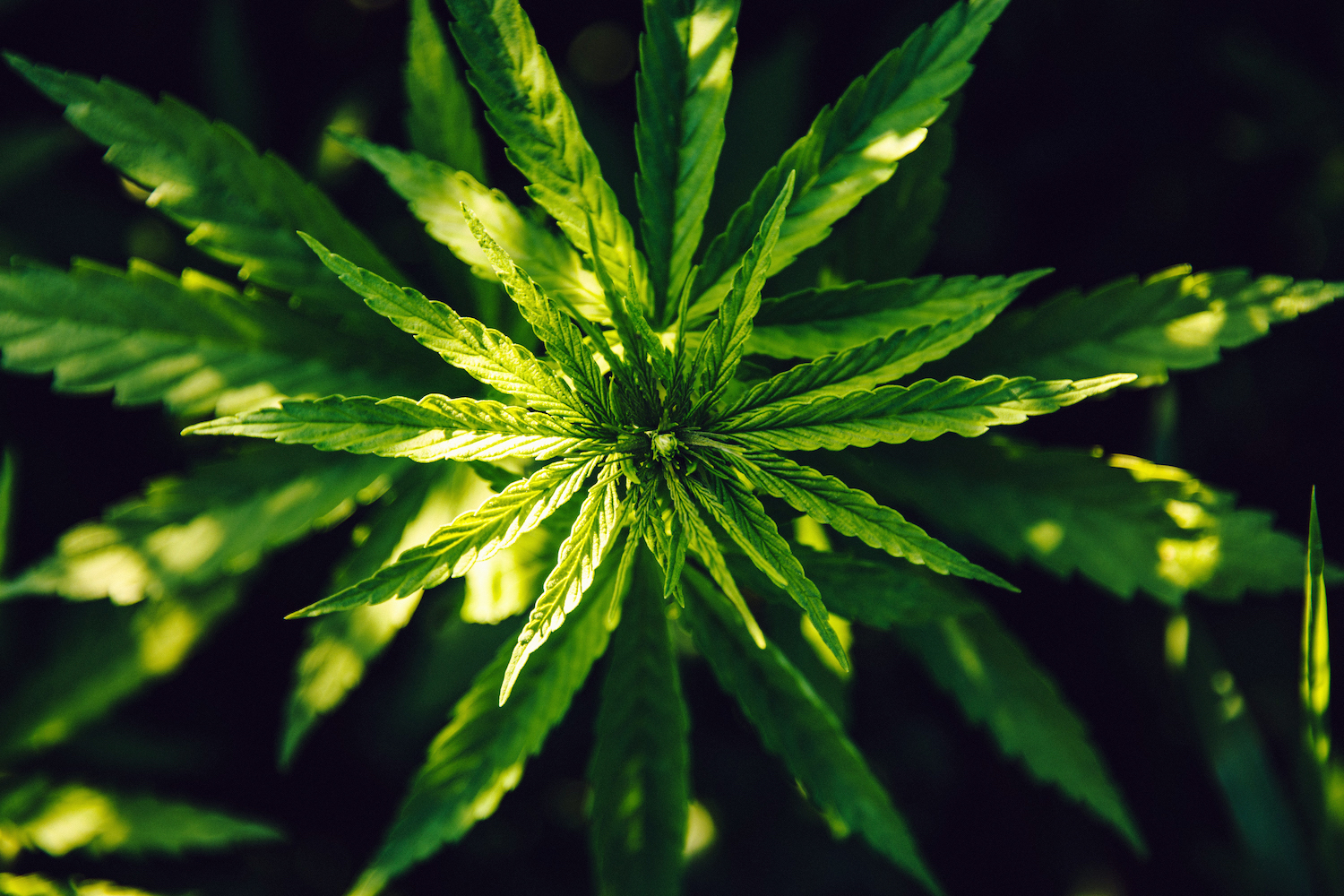
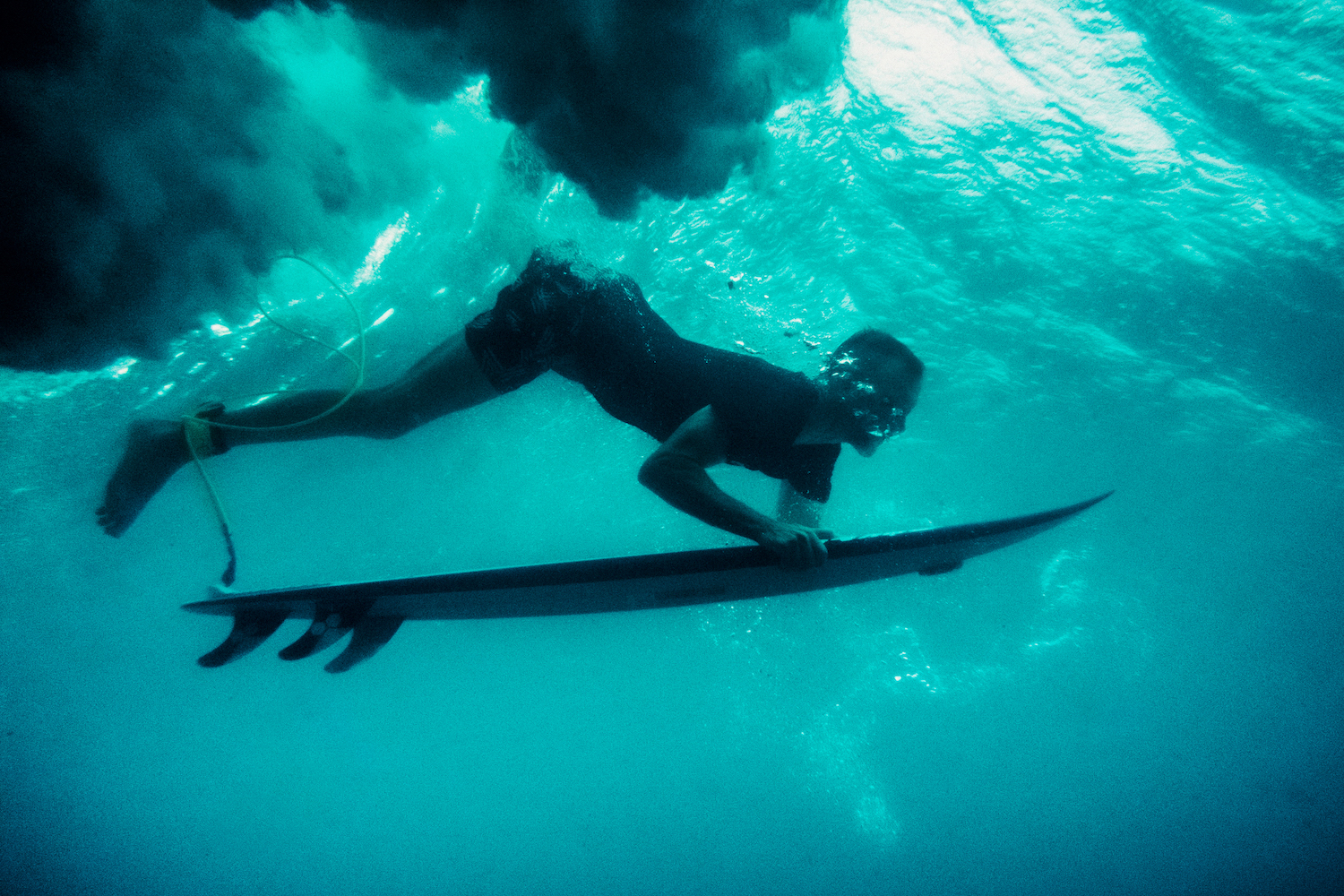
1987: Withnail and I released. A giant spliff featured towards the end of the film known as the Camberwell Carrot, is surely in part responsible for the weird trend of building ridiculous, dysfunctional ‘8 (10, 12…) skinner’ joints, mainly among 17-year-olds parked up in a back lane in mum’s Fiesta.
1990: Endocannabinoid system first identified in humans, with two major endocannabinoids, anandamide and 2-arachidonoylglycerol discovered. Endocannabinoids are molecules similar to the phytocannabinoids THC (gets you high) CBD (doesn’t get you high) found in cannabis, and occur naturally in the body.
1994: Amsterdam becomes a favourite side trip for many touring surfers on the newly formed WCT European leg, in part due to the coffee shop scene popularized in Pulp Fiction, “You’d dig it the most, man” enthuses Vincent Vega (John Travolta). “It’s legal to buy it, legal to sell it, and if the cops pull you over, it’s illegal for them to search you.” While Vega somewhat mangles the details, his appraisal is accurate in terms of the spirit of the law. He’s later gunned to death by his own uzi after leaving it outside the toilet whilst having a poo, by Bruce Willis’ Butch. Butch’s French girlfriend Fabienne is played by Portuguese actor Maria de Madeiros, whose sister, Iñes de Madeiros, is an actor turned politician and the current mayor of Almada near Lisbon, who presented the awards at the WSL QS event in May 2021. Which is the kind of deep research and rich, circular storytelling you just don’t get on other surf titles (except EoS, obvs).
1999: Hard to put an exact date on when the wretched grow shop/weed font appeared, vaguely graffiti-esque, bright green and garish, but it’s right down there with Comic Sans. Worse, maybe.
2009. Carrefour supermarket car park, Papeete, Tahiti is the location for drive up purchases of match boxes of low qual, high price seed n’ sticks bushweed. Your correspondent, via a clerical error on an order form for free Volcom clothes, got 17 pairs of Ozzie Wright’s tartan themed boardshort, instead of the 1 ordered. As a stark example of currency depreciation and the volatility of unregulated blackmarket transactions, at the start of the trip one pair of boardies, which cost north of 100 euro in Tahiti, were exchanged for a €50 match box. Then 2. By the end it took 3 pairs, and required lengthy negotiations.
2012: Surfing adds recreational drugs to its testing regime. Kelly Slater responds by calling it “silly” that a snowboarder was stripped of his Winter Olympics gold medal for testing positive for marijuana. “You think that helped him or hurt him? I would have thought it slowed him down,” Slater said. “It was kind of ridiculous. The guy wins and they take it away because he was smoking pot and that was cheating.”
2013: Growing clinical research into CBD as a treatment for various acute conditions includes a 5-year-old American girl with Dravet Syndrome, taking CBD oil and having her seizures reduce from over 300 per week to 3 per month. As well as epilepsy, CBD grows in popularity for a variety of treatments, including for MS, anxiety and depression, pain relief, high blood pressure, arthritis, inflammation, diabetes and for improving sleep.
2014: Innovative ways of tooting puff in the surf continue to appear worldwide. A UK pro stashes joints in a GoPro housing at a Welsh slab, spliffing between sets comfortably. On the other side of the world, in-lineup irie becomes in tube toking, as a local named Danny smokes reefer inside the barrel at Little Av in North Sydney. After stepping off the jump rock dry haired, he promptly pulls into a drainer. A friend later reported first seeing a cloud of smoke emerge from the tube, then the surfer, then the spit.
2016: Weedmaps, a website for finding local weed dispensaries, sponsors a North Shore house and surfers including Nathan Fletcher, Joel Tudor, Bruce Irons and Dustin Barca. Pro surfers are ever more comfortable with going public with their smoking, and are keen to voice the various health benefits of an increasing range of CBD and THC products.
2017: As crop sustainability becomes ever more important to consumers, studies show the incredible benefits of cultivating hemp versus other plants; hemp crops sequester 10 times more carbon than forests, use less than half the water required to grow cotton and other fibre crops, and require no pesticides.
2018: As recreational cannabis use is decriminalised in ever more US states, and production for medicinal use continues to grow, differentiating the two cannabinoids becomes ever more widespread. CBD was at much higher levels in weed that was smoked and ingested throughout history, with THC only becoming the dominant cannabinoid in the 21st century. Moroccan hash is 50/50 CBD/THC whereas California growers have developed cannabis strains with almost no CBD and up to 30% THC.
Likewise, the difference between hemp and marijuana (weed, etc) becomes better understood by the general public; hemp is classified as under 1% THC and marijuana, pot, weed etc applies to plants that contain over 1% THC.
2021: Goodrays launch a range of CBD drinks, aiming to create great tasting, functional CBD products that have genuinely positive impacts. Find out more about Goodrays, CBD and the brand’s sustainability.
Photography by Owen Tozer
